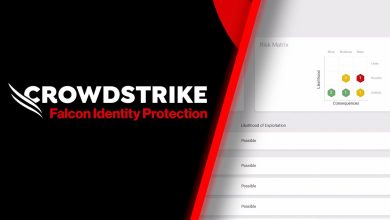SquareX Discloses Architectural Limitations of Browser DevTools in Debugging Malicious Extensions
Uncovering a Fundamental Gap That Leaves Millions Exposed

Despite the expanding use of browser extensions, the majority of enterprises and individuals still rely on labels such as “Verified” and “Chrome Featured” provided by extension stores as a security indicator. The recent Geco Colorpick case exemplifies how these certifications provide nothing more than a false sense of security. In fact, Koi Research disclosed 18 malicious extensions that distributed spyware to 2.3 million users, with most bearing the well-trusted “Verified” status.
To this point, SquareX researchers also disclosed the technological reason behind this vulnerability, highlighting an architectural flaw in Browser DevTools that prevents browser vendors and enterprises from performing the thorough security analysis many enterprises expect.
“Aside from the fact that thousands of extension updates and submissions are being made daily, it is simply impossible for browser vendors to monitor and assess an extension’s security posture at runtime,” said Nishant Sharma, Head of Security Research at SquareX, “This is because existing DevTools were designed to inspect web pages. Extensions are complex beasts that can behave dynamically, work across multiple tabs and have ‘superpowers’ that allow them to easily bypass detection via rudimentary Browser DevTool telemetry.”
In other words, even if browser vendors were not inundated by the sheer quantity of extension submission requests, the architectural limitations of Browser DevTools today would still allow numerous malicious extensions to pass DevTool based security inspections.
Browser DevTools were introduced in the late 2000s, long pre-dating the widespread extension adoption. These tools were invented to help users and web developers debug websites and inspect web page elements. However, browser extensions have unique capabilities to, among others, modify, take screenshots, and inject scripts into multiple web pages, which cannot be easily monitored and attributed by Browser DevTools. For example, an extension may make a network request through a web page by injecting a script into the page. With Browser DevTools, there is no way to differentiate network requests made by the web page itself and those by an extension.
The SquareX Recommendation
Detailed in the technical blog, SquareX’s researchers propose a novel approach that uses the combination of a modified browser and Browser AI Agents to plug this gap. The modified browser exposes critical telemetry required to understand an extension’s true behaviour, while the Browser AI Agent simulates different user personas to incite various extension behaviors at runtime for monitoring and security analysis. This not only allows a dynamic analysis of the extension, but also discoveries of various “hidden” extension behaviors that are only triggered by time, a certain user action or device environments. Named Extension Monitoring Sandbox, the research details the necessary modifications required for the modified browser.
The revelation of Browser DevTools’ architectural limitations exposes a fundamental security gap that has led to millions of users being compromised. As browser extensions become a core part of the enterprise workflow, it is critical for enterprises to move from superficial labels to solutions specifically designed to tackle extension security. It is absolutely critical for browser vendors, enterprises and security vendors to work closely together in tackling what has become one of the fastest emerging threat vectors.
This August, SquareX is offering a free enterprise-wide extension audit. The audit involves conducting an extensive audit of all extensions installed across the organization using all three components of the SquareX Extension Analysis Framework—metadata analysis, static code analysis and dynamic analysis with the Extension Monitoring Sandbox—providing a full analysis of the organization’s extension risk exposure and a risk score for each extension.




